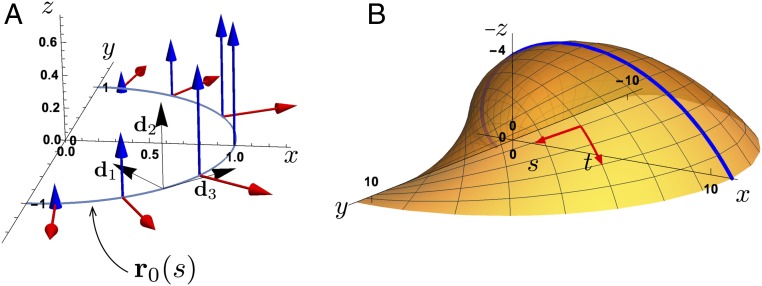Fig. 2.
(A) The base geometry for bivalved shells is constructed via a locally defined growth velocity field defined on a base curve equipped with orthonormal basis . The growth consists of dilation (red arrows) and a coiling velocity in the binormal () direction with linear gradient (blue arrows) and hinge along the axis. (B) The resulting surface for one valve of the bivalve shell, with the and directions highlighted as well as the longitudinal midline (the curve ), which forms a logarithmic spiral.

